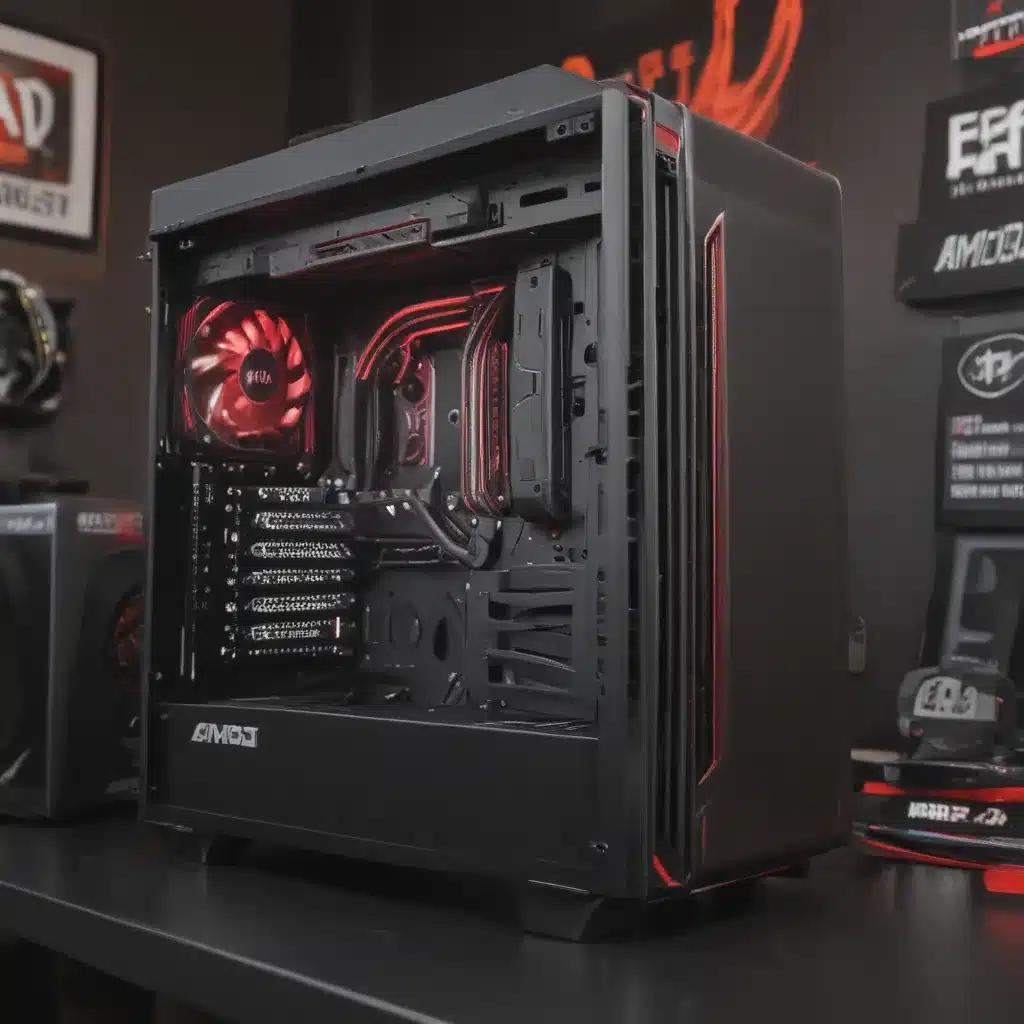The Transition from Mac to PC
I’ll admit it – up until a couple of years ago, I was a diehard Mac user. As a motion designer, I had sworn allegiance to the Apple way of life, believing that Macs were the only true path to creative enlightenment. But then, something shifted. The siren call of PC performance and affordability became too strong to ignore, and I found myself standing at a crossroads, unsure of which way to turn.
Thankfully, the lovely folks at Puget Systems [1] were there to guide me through the transition. They listened to my needs, understood my workflow, and helped me navigate the dizzying world of PC components. With their expert advice, I was able to build a rig that not only met my creative demands but also managed to save me a pretty penny in the process.
Balancing CPU and GPU Power
Now, as I sit before my new AMD-powered workstation, I can’t help but marvel at the sheer power at my fingertips. You see, when it comes to content creation, the battle between CPU and GPU is a delicate dance, and I had to be sure to strike the right balance.
On one hand, the single-threaded performance of the CPU is crucial for tasks like modeling, animation, and 3D rendering in Cinema 4D. AMD’s Ryzen Threadripper [2] lineup proved to be the perfect fit, with their lightning-fast clock speeds and impressive core counts. But I also needed to consider the growing importance of GPU acceleration, especially for my Octane and Redshift rendering workflows.
The Rise of GPU Rendering
Ah, GPU rendering – the holy grail of content creation! These days, it’s all the rage, and for good reason. With the incredible advancements in NVIDIA’s RTX 40-series [3] cards, I can now churn out mind-blowing visuals in a fraction of the time it would have taken me on my old setup.
The key, of course, is finding the right GPU for the job. I knew I wanted to go with NVIDIA, as the support from third-party renderers like Octane and Redshift is unparalleled. But the decision between the RTX 4080 and the behemoth RTX 4090 wasn’t an easy one. In the end, I opted for the 4090, not only for its raw performance but also for the sheer amount of VRAM it offers – a crucial factor when working with high-res textures and intricate particle simulations.
The Importance of Cooling and Power
Of course, with great power comes great responsibility (and a hefty electricity bill). These new 40-series GPUs are true beasts, and they require some serious cooling and power to tame. I’m talking about a beefy 1200W power supply [4] and a case that can handle the sheer size and heat output of the 4090.
Thankfully, the folks at Puget Systems [1] knew exactly what I needed, and they helped me put together a rig that can handle anything I throw at it. I’m talking about lightning-fast boot times, seamless multitasking, and render times that make my old Mac Pro look like a turtle in a race against a cheetah.
The Future of Content Creation
As I look to the future, I can’t help but feel excited about the possibilities. With the ongoing optimization of programs like Cinema 4D for multi-core processors [5], I know that my Threadripper’s 32 cores are going to become increasingly crucial. And with the constant advancements in GPU technology, I can’t wait to see what the next generation of Radeon and GeForce cards will bring to the table.
One thing’s for sure – with my new AMD-powered workstation by my side, I’m ready to tackle any creative challenge that comes my way. So bring on the massive 3D scenes, the complex particle simulations, and the demanding video editing sessions. This rig is ready to rumble, and I couldn’t be more thrilled.
References:
[1] Puget Systems: https://www.pugetsystems.com/
[2] AMD Ryzen Threadripper: https://www.amd.com/en/products/cpus/amd-ryzen-threadripper-pro
[3] NVIDIA RTX 40-series: https://www.nvidia.com/en-us/geforce/graphics-cards/40-series/
[4] High-wattage power supply: https://www.pcpartpicker.com/products/power-supply/#W=1200,2000&m=14,11,71,63,126
[5] Cinema 4D multi-core optimization: https://community.maxon.net/en/discussion/comment/624508













